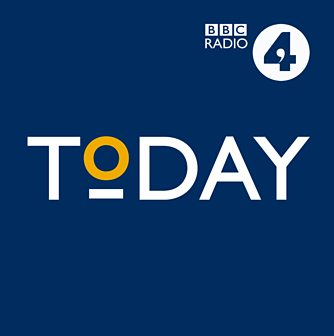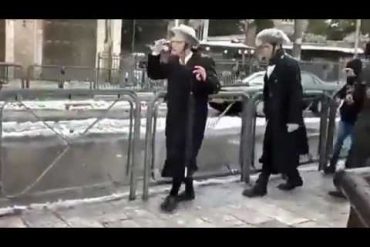During Operation Protective Edge the BBC News website’s ‘In Pictures’ section produced five separate features, all of which were also promoted on the site’s Middle East page. Most of the images selected by picture editor Phil Coomes and his team are from agencies such as Reuters, AP and AFP, although usually without their original captions. 
The first of those features appeared on July 11th under the title “In pictures: Gaza conflict escalates” and as we noted here at the time it included nine images in all: six from the Gaza Strip and three from Israel. Of the images photographed in the Gaza Strip, four show destroyed buildings, one shows a long-shot of missiles being launched and one shows mourners at a funeral. Two of the three photographs taken in Israel show onlookers at locations where missiles landed in Netivot and one shows the aftermath of a missile hit on a petrol station in Ashdod.
On July 20th a feature titled “In pictures: Gaza conflict intensifies” was published. Of the eight images appearing in it, six show scenes in the Gaza Strip and two are intended to depict Israel. Two of the pictures taken in Gaza show casualties being evacuated by medical personnel, one depicts what is described in the caption as “intense shelling”, one shows a long-shot of a missile being launched from the Gaza Strip, one shows an Israeli helicopter and one shows a view of an urban landscape in the Gaza Strip with Israeli armoured vehicles in the foreground. Both the images depicting Israel show soldiers.
July 29th saw the appearance of another collection of photographs under the title “In pictures: Gaza hit again after ‘heaviest night’“. Of the eleven images featured, six were taken in the Gaza Strip and five in Israel. The photographs taken in Israel show a military funeral, the evacuation of a wounded soldier, soldiers standing on an armoured vehicle, a group of civilians taking cover in the street during a missile attack and a man looking at the Gaza Strip through binoculars. One of the pictures taken in the Gaza Strip shows a woman and children apparently evacuating their home, one shows onlookers near a shrapnel damaged car, one shows illumination flares and three show fires and explosions.
The next feature – headlined “In pictures: Israel-Hamas ceasefire collapses” appeared on August 1st and it includes eight photographs. Two of the images depict a riot near Ramallah on that date. Four of the images were photographed in the Gaza Strip: one shows a child in hospital, one shows an urban landscape and an explosion, two show damaged structures. Of the two photographs depicting Israel, one captioned “Israel’s Iron Dome defensive system intercepted rockets over Beersheba in southern Israel as the ceasefire collapsed” does not show the Iron Dome at all, but soldiers firing artillery. The second picture shows Israeli civilians in an air-raid shelter in Ashkelon (although the location is not clarified by the BBC), with the caption “In Israel, normal life is continuing despite air raid sirens and rocket alerts. Israeli public support is overwhelmingly in favour of the army’s operation in Gaza”.
The fifth feature appeared on August 4th under the title “In pictures: Faces from Gaza“. In contrast to the usual BBC practice of using agency photographs, all the pictures in this item were taken by the BBC’s own Jon Donnison and all eleven photographs depict civilians in the Gaza Strip. Captions to the photographs include the following statements, which of course cannot be verified, but in contrast to the few photographs of Israeli civilians in other features, use names and short stories to personalise the people portrayed.
“A young girl and her mother shelter in a UN school in Rafah. The girl’s brother is in hospital after an Israeli bombing.”
“Three-year-old Aya was injured in Rafah when the family house was bombed as she slept. Aya cries for her mother, but she has been killed.”
“Ahmed, left, is being treated for severe burns in hospital in Khan Yunis, watched over by his brother Mahmoud. Their other brother, Mohammed, 17, was killed by Israeli bombing in Rafah. Mahmoud said they had all eaten dinner together and were laughing and joking a few hours before the attack.”
“Ali, 11, was injured as he played outside his home in Rafah when an Israeli bomb hit his neighbour’s house. Doctors are treating him in the car park of the Kuwaiti Hospital in Rafah as all the beds inside are full.”
In total forty-seven images appeared in these five photo essays. Two of those pictures were taken near Ramallah, thirty-three in the Gaza Strip and twelve in Israel, meaning that the Palestinian view of the story was given almost three times as much coverage as the Israeli one. Whilst several of the pictures show Israeli soldiers, there are no pictures whatsoever of members of Hamas or other terrorist organisations. Although six of the photographs show dead or injured civilians in the Gaza Strip, there are no pictures at all of injured Israeli civilians. Numerous pictures of damaged buildings in the Gaza Strip contrast with one picture of damage to a structure in Israel. Several photographs show explosions attributed to Israel in the Gaza Strip, compared to one photograph of a fire at a petrol station in Israel.
In common with its written and verbal depictions of the hostilities, the BBC’s pictorial portrayal presents audiences with a view which frames the conflict in terms of its effects on the civilian population of the Gaza Strip but largely removes Hamas’ terrorist activities from the picture and downplays the effects of that terrorism in Israel.



